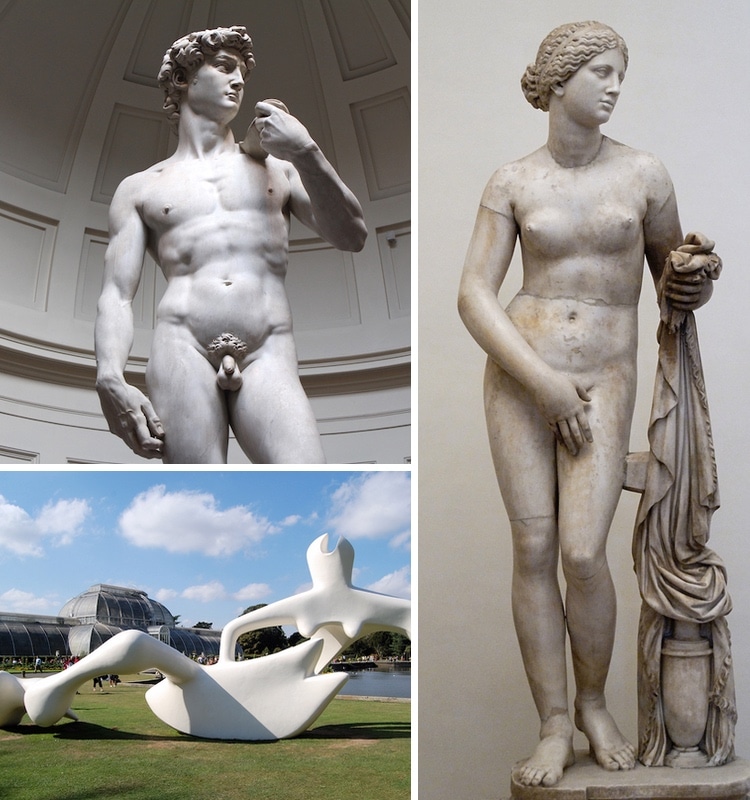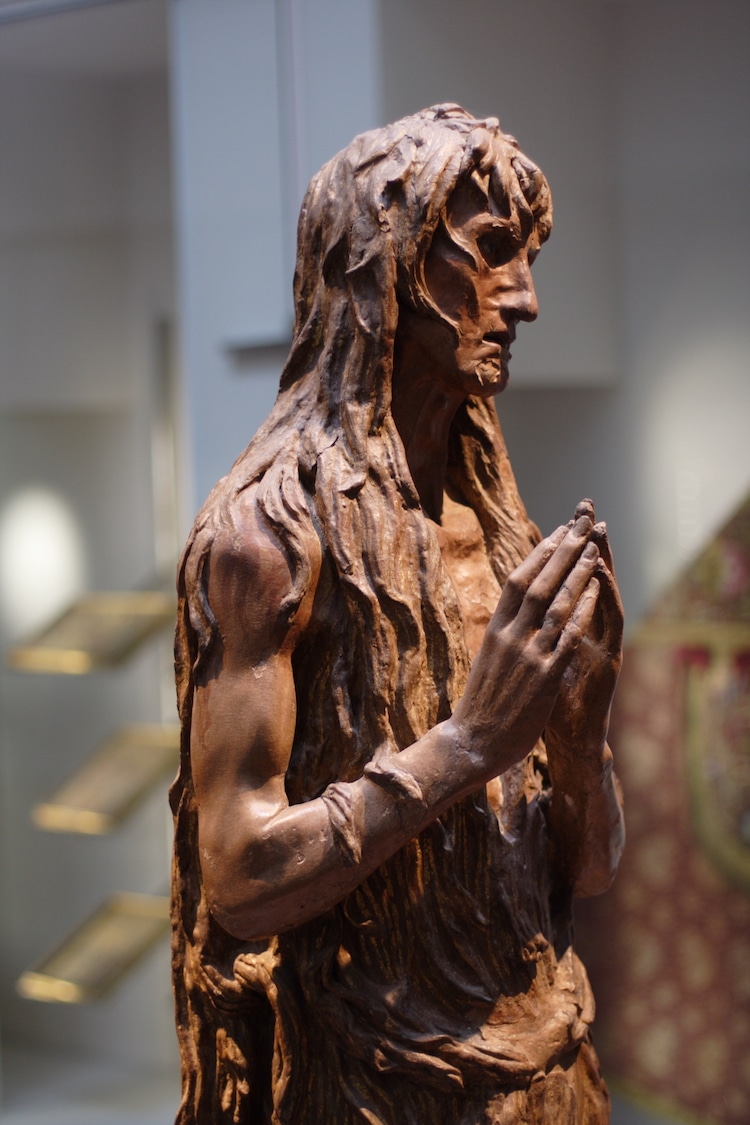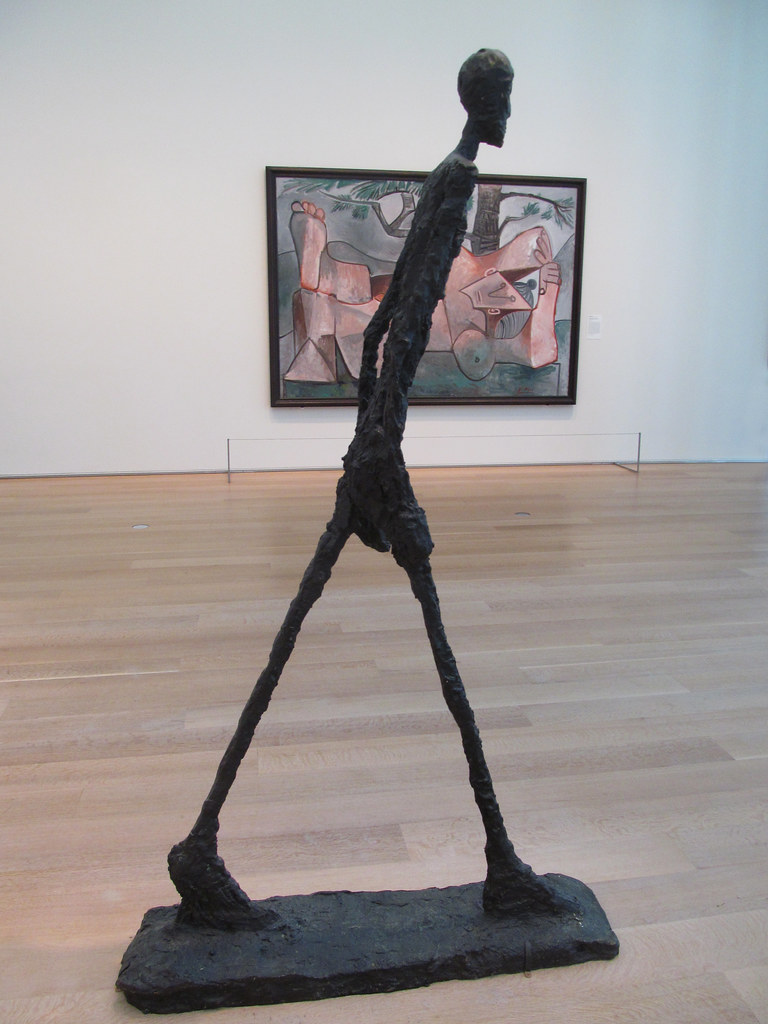Rodin, Michelangelo, Donatello—these are the names of the innovative visionaries behind some of the greatest sculptures in art history. Sculptors like these gifted creatives have the unique opportunity to bring their subject to life and manipulate materials to defy the expectations of spectators. Whether chiseling marble or casting in bronze, there is no denying the power of sculpture.
Listen beautiful relax classics on our Youtube channel.
Throughout history, there have been famous sculptors who have withstood the test of time. Perhaps they are valued for their ability to create highly realistic figures or maybe they are prized for their willingness to push boundaries and defy expectations. Regardless of their style, we’ve rounded up a collection of great sculptors who have created some of the most recognized pieces of Western art in history.
From the ancient Greeks to 20th-century Modernists, this look at 10 famous sculptors is a timeline of the development of Western art. Without each artist’s contributions, it would difficult to imagine visual culture as we now know it.
Learn more about 10 famous sculptors who have helped shape Western art and culture.
Praxiteles (active 4th century BCE)
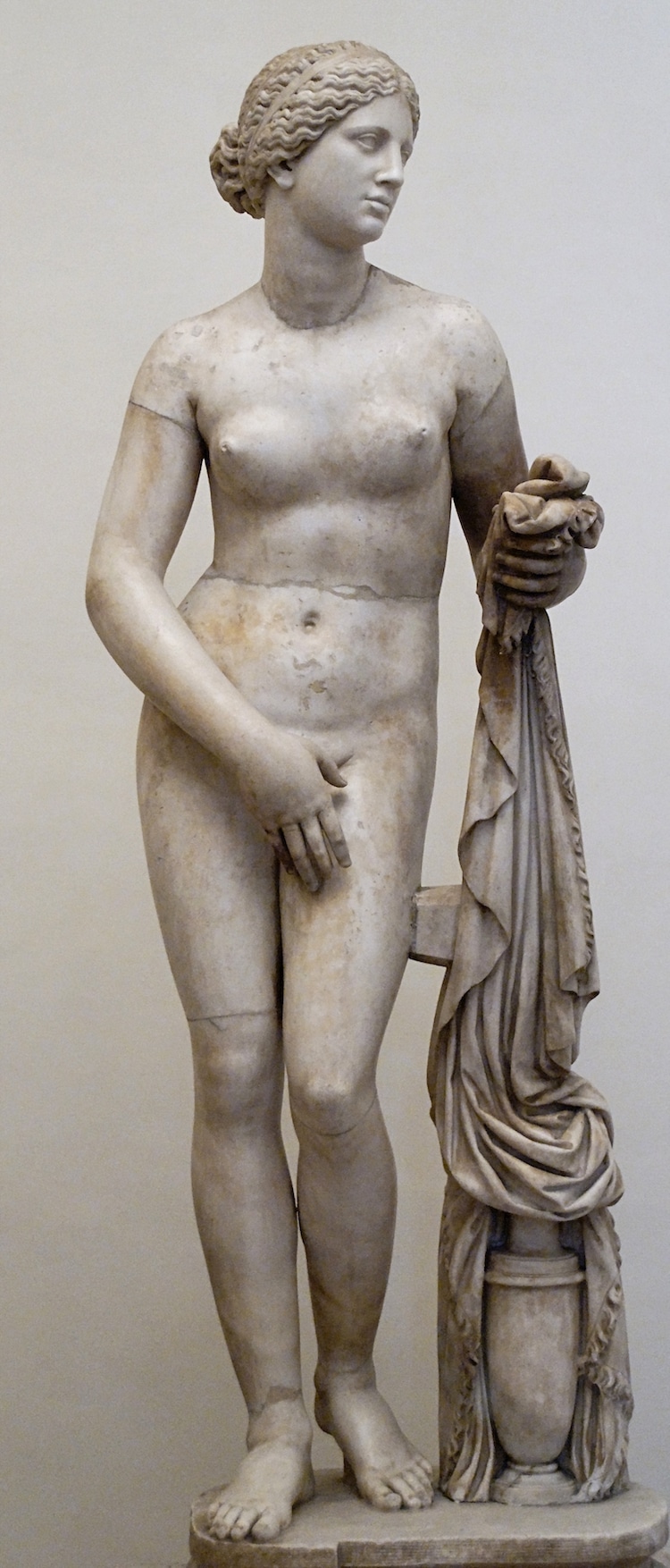
“Aphrodite of Knidos” Marble, Roman copy after a Greek original of the 4th century by Praxiteles. (Photo: Museo Nazionale Romano di Palazzo Altemps [Public domain], via Wikimedia Commons)
Though it’s difficult to know much about the great sculptors of ancient Greece, one name has stood the test of time. Thanks to the work of great authors like Pliny the Elder and Vitruvius, Praxiteles has become a name synonymous with ancient Greek sculpture. None of his original statues survived, but we are familiar with his work thanks to Roman copies of the originals. The Aphrodite of Knidos is his most well-known work and is the first example of a full-scale female figure portrayed in the nude. This work would go on to influence the way the female form was depicted in sculpture for centuries to come.
Donatello (c. 1386 – 1466)
Italian sculptor Donatello was fundamental in pushing forward art and culture during the Italian Renaissance. Primarily working in Florence, much of his work can still be found in the city today. His bronze David statue is the mark of a significant change in art, as it was the first free-standing nude since antiquity and marks the beginning of Renaissance sculpture. The astonishing realism of his wood Penitent Magdalene shows just how far ahead of his time Donatello was.
Michelangelo (1475 – 1564)

“David” by Michelangelo. (Photo: Stock Photos from Marta Pons Moreta/Shutterstock)
While he’s associated closely with fresco art due to his impressive Sistine Chapel ceiling, Michelangelo is really a sculptor at heart. He believed that every block of marble contained a work of art waiting to be released, and he just needed to chip away until it appeared. His iconic David statue remains an enduring symbol of the Italian Renaissance and continues to inspire generations of artists. A sculptor until his dying day, Michelangelo was dedicated to his craft, and he continued working right up until the week of his death at the age of 88.
Gianlorenzo Bernini (1598 – 1680)

‘Pluto and Persephone’ by Bernini. (Photo: Stock Photos from wjarek/Shutterstock)
Perhaps no other artist defines the Baroque era more than Gianlorenzo Bernini, whose impressive career spanned for nearly 70 years. As a child prodigy, Bernini was creating large-scale marble sculptures as a teen. Later, he would become the architect of St. Peter’s Basilica—following in Michelangelo’s footsteps—where he created the Basilica’s iconic plaza and colonnade, as well as its central bronze canopy. A master of materials, Bernini is known for his astonishing ability to create movement and bring forth emotion with his work. In his hands, marble transforms into soft flesh that looks so real, you want to reach out and squeeze it.
Auguste Rodin (1840 – 1917)
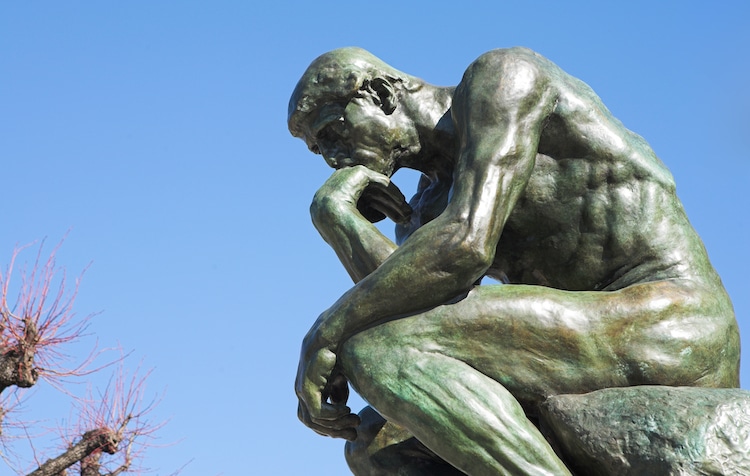
A cast of “The Thinker” by Rodin. (Photo: Stock Photos from Sean Neal/Shutterstock)
Listen beautiful relax classics on our Youtube channel.
French sculptor Auguste Rodin is generally thought to have brought sculpture into the modern age. Classically trained, he came to international attention after his works were displayed at the World’s Fair. Rodin continues to be one of the most recognized artists in the world, with his pre-eminent work The Thinker visible in different castings around the globe. Rodin is known for his ability to forgo realism and decoration in favor of using texture, surface details, and light and shadow to convey emotion. His focus on inner emotion and suffering is a turning point in the history of art and serves as a hallmark of Modernism.
Constantin Brancusi (1876 – 1957)
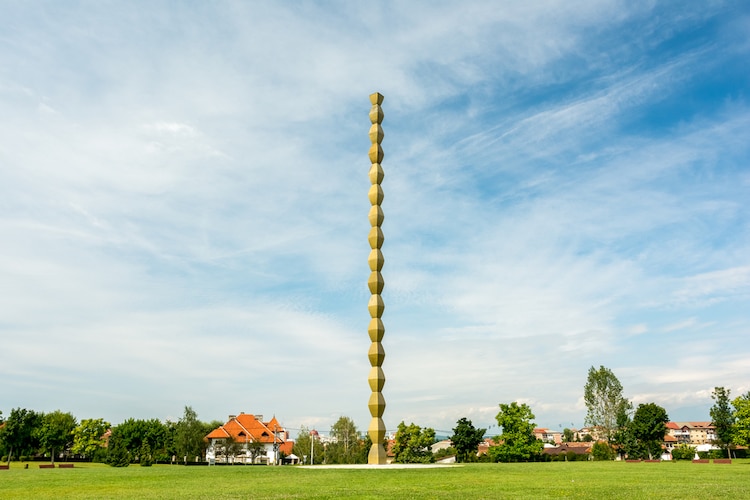
“Endless Column” by Brancusi. (Photo: Stock Photos from Radu Bercan/Shutterstock)
One of the most influential sculptors of the 20th century, Constantin Brancusi was a pioneer of Modernism. The Romanian artist was greatly influenced by folk traditions, though he also sought inspiration in cultures outside of Europe. His sculptures are known for their clean, geometric lines, as evidenced by his acclaimed Bird in Space series. Brancusi also created masterful outdoor sculpture. Endless Column is one of three works he created to commemorate Romanian heroes of World War I. The stacked shapes feature a half rhomboid at the top of the totem, which is meant to symbolize infinity.
Alberto Giacometti (1901 – 1966)
Swiss sculptor Alberto Giacometti is perhaps most recognized for his thin, elongated figures. Their rough texture allows viewers to see the force of the sculptor, who was also a painter and printmaker. For a six-year period, starting in 1938, Giacometti focused on small-scale sculptures, with each piece measuring no more than 2.75 inches in height. Giacometti’s work is often considered when discussing existentialism and the human condition. Many scholars have suggested that his elongated figures relate to a lack of meaning in 20th-century life.
Henry Moore (1898 – 1986)
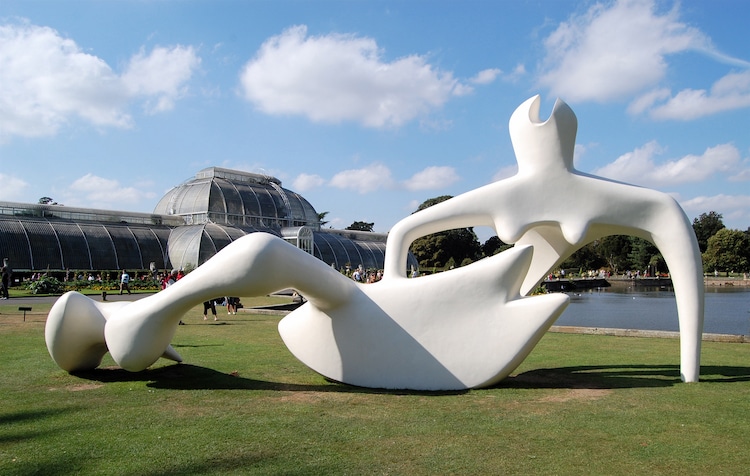
“Reclining Figure” by Henry Moore. (Photo: Stock Photos from Ron Ellis/Shutterstock)
Known for his semi-abstract public sculptures, English artist Henry Moore was the preeminent post-World War II sculptor both in Britain and abroad. His work most often features reclining figures with a recurring theme of Mother and Child. Moore’s figures are often dissected into multiple pieces, yet his clean lines allow viewers to effectively see the figure within the abstract form. Fans of his work will want to visit his 60-acre estate in Perry Green, Hertfordshire. Now owned by the Henry Moore Foundation, it’s home to the largest collection of his work.
Sol LeWitt (1928 – 2007)
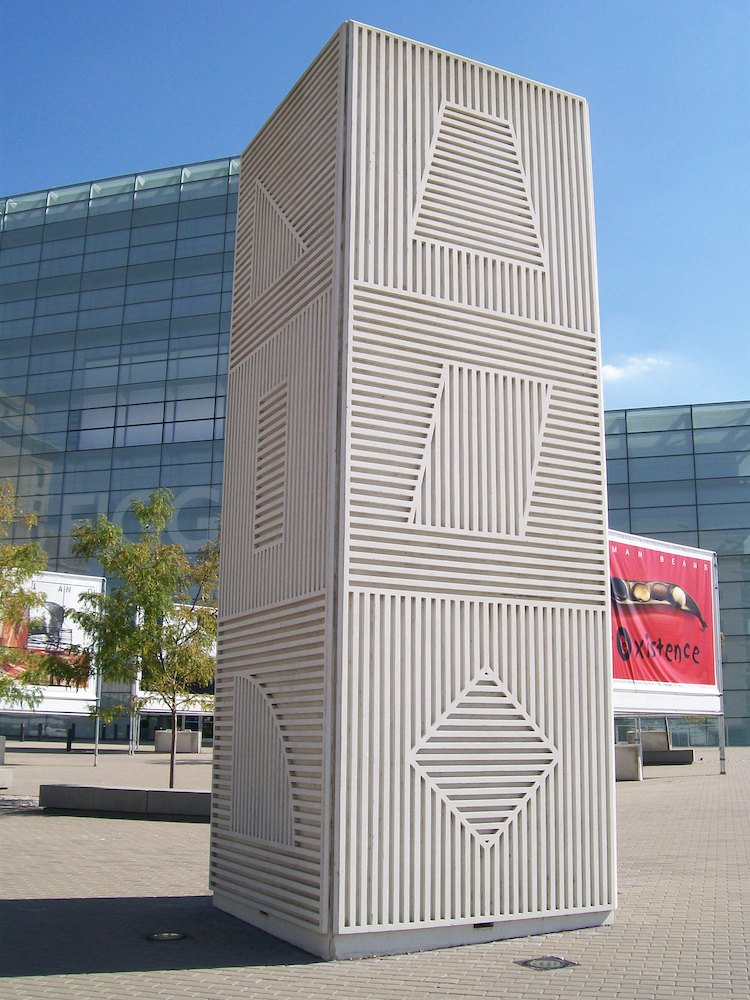
‘Tower’ by Sol Lewitt. (Photo: Public domain via Wikipedia)
Recognized as a founder of both Minimalism and Conceptualism, Sol LeWitt rose to prominence in the late 1960s. The American artist preferred the term “structures” over sculptures. He was highly interested in modular structures that were often cubic in nature, with much of his work executed in stacked cinder blocks. Later in life, he began to incorporate curvilinear forms and saturated colors—a complete departure from his previous production. A multi-faceted artist, LeWitt is also recognized for his wall drawings, gouaches, and architectural projects.
Louise Bourgeois (1911 – 2010)
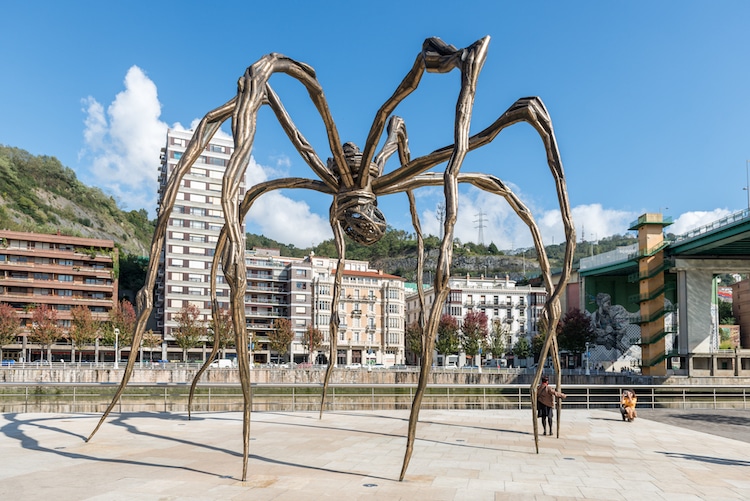
‘Maman’ by Louise Bourgeois. (Photo: Stock Photos from tichr/Shutterstock)
Most well-known for her public art and installations, French-American sculptor Louise Bourgeois rose to international acclaim in 1982 after the Museum of Modern Art held her first retrospective. By this time, she was already in her 70s and had enjoyed a prolific career. Drawing from her own life experience, her sculptures often explore themes of family, sexuality, and death. In the 1990s, Bourgeois began using the spider as a symbol in her art. Maman was cast as an edition of six bronzes and stands at over 30 feet high. The work is an ode to the sculptor’s mother, who died when she was a child, and speaks to her strength and protection over her family.
Related Articles:
How the Natural Beauty of Hellenistic Sculpture Has Captivated the World for Centuries
This Armless Sculpture Is One of the Louvre’s Most Treasured Masterpieces
8 Real-Life People Who Became the Stars of Art History’s Most Famous Paintings
How Marble Sculptures Have Inspired Artists and Captivated Audiences for Millenia
10 Best Sculpture Parks Around the World
The post 10 Great Sculptors Who Changed the History of Art appeared first on My Modern Met.
Source: mymodernmet.com
